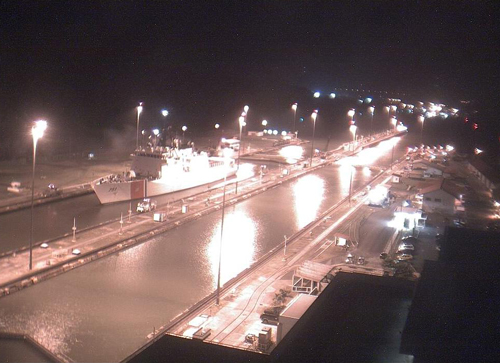Towards a rescue capability gap?

The military impact of equipment shortfalls and delayed modernization efforts is sometimes difficult to measure. When a crisis like Haiti happens, the U.S. military responds and is able to work with allies across the region, obscuring the shortfalls’ true effect.
For example, the U.S. Coast Guard has played a crucial role throughout the crisis. It was first on the scene and has remained active throughout. At the same time, the inability to modernize the cutter fleet in a timely fashion has created a looming critical shortfall in capability. During the crisis, the USCG had to bring a venerable cutter, USCGC Hamilton, from the Pacific via the Panama Canal to play a crucial role. By 2012, this ship will be decommissioned and unable to support a similar crisis in the future.
The Coast Guard’s recent plans to replace the Hamilton with one of its sister ships, the Dallas, was abandoned when the President’s FY-2011 Budget Request announced that both these vessels would be decommissioned. The Budget Request, just released, determined that both vessels were more than 40 years old and too expensive to maintain. A replacement for the Hamilton has yet to be identified.
Originally, twelve of these highly capable cutters were built. Plans call for their replacement by eight National Security Cutters. To date, only two of these new vessels have been built and one is currently under construction. Funding is being sought for the next two.
The national policy seems to be “throw out the old and bring in the new very slowly.” The policymakers are needlessly accepting the capability gap and recklessly hoping that no Haiti-type crisis occurs.
From a capabilities standpoint, the differences between the old and the new cutter are significant. The old cutter is limited in performance, command and control, and how assets on board can be deployed. The new cutter is a fully functional command ship with significant connectivity with U.S. and allied law enforcement and military authorities. While the older cutter can carry only an H-65 helicopter, the new cutter will carry the re-furbished H-60s, which are significantly larger and more capable. The new cutters can also carry unmanned aerial vehicles, which will be useful in crises like Haiti.
Simply put, if you want the U.S. military to continue doing the magnificent job it performed in Haiti, you have to pay for the infrastructure, which includes the highly trained and experienced crews and sustained logistics support. The infrastructure is built by buying real systems. More briefing slides on future capabilities, numerous IG and GAO reports, and dozens of Congressional Hearings may amuse folks inside the Beltway. However, they deliver no real world capability, which the first line responders need. The second line of defense is provided by manufacturing and acquiring platforms and systems. Without the second line there is no first line. A rescue capability gap is certain without recapitalizing the infrastructure.
***
NB: In the accompanying video, the Hamilton is pictured coming from the Pacific through the Panama Canal to participate in the Haiti rescue.
———-
***Posted February 15th, 2010


